Trafalgar Square was designed by Sir Charles Barry in 1838 but not named after Vice Admiral Nelson's 1805 naval victory over the French until 1841. Nelson's Column was built in the 1840s and dominates London's first open public square which, over the next hundred years, became a place to commemorate naval and military heroes of the British Empire.

| Â |
Trafalgar Square - the capital's new focal point for social and cultural activity |
|
 | |
Trafalgar Square - the capital's new focal point for social and cultural activity |
| Â |
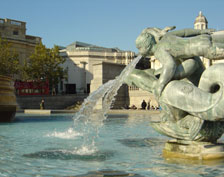
The other plinths
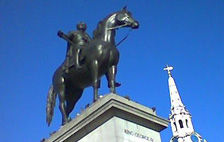
Nelson's Column
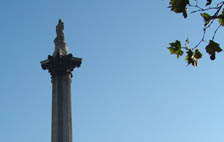
The RSA project
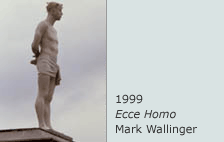
George IV
The George IV statue was designed by Sir Frances Chantrey to go on top of a ceremonial arch in front of Buckingham Palace. After the King's death in 1830, it was decided that the statue would be placed temporarily on the east plinth in Trafalgar Square where it has been ever since.
Towards the end of the 19th century an inscription, GEORGE IV was added, as by this time nobody knew who the statue represented.
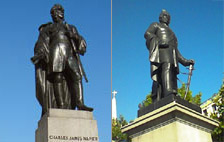
General Charles Napier
Charles Napier (above left) was a little known officer in the British Army who spent most of his life serving the British Empire abroad except for a short period when he commanded the home army in the north of England during the Chartist agitations in the 1830s.
On his return to India in 1841 he commanded the British Army against the local Amirs in Hyderabad and following their defeat Sind (now known as Pakistan) became part of British India. After Napier's death in 1853 money was raised for a bronze statue which, after some delay by the Government, was placed on the west side of Trafalgar Square in 1856.
Major General Sir Henry Havelock
Henry Havelock (above right) spent all his army life in India serving the British Empire where he built a reputation as a forceful and sometimes ruthless military commander.
In the mid-1850s many Indian citizens, including thousands who served in the British Army, rebelled against the British occupation by laying siege to several British-held towns and cities.
Nelson's Column is the monument in the middle of Trafalgar Square in London. It consists of a statue of Horatio Nelson on top of a granite column.
It was designed by architect William Railton in 1838 and built between 1840 and 1843 to commemorate Vice Admiral Viscount Nelson, who died at the Battle of Trafalgar in 1805. The top of the column is decorated with bronze acanthus leaves and the square pedestal features four bronze panels, cast from captured French guns, depicting Nelson's four great victories. The four large bronze lions at the foot of the column were made to the designs of the famous animal painter Sir Edwin Landseer and were put in place in 1867.
In 1998 the Royal Society for the encouragement of Arts, Manufactures and Commerce (RSA) commissioned a series of three works to be displayed temporarily on the plinth, Ecce Homo by Mark Wallinger (1999), Regardless of History by Bill Woodrow (2000) and Monument by Rachel Whiteread (2001).
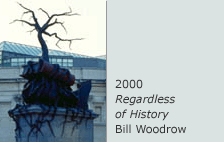
The aim of these commissions was to raise public awareness, create examples of the types of artwork that could be created for the plinth and to help resolve its long-term future.
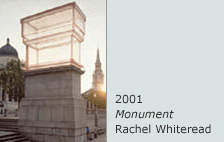
The campaign was very successful and led to the Government asking Sir John Mortimer QC to set up an independent committee which, informed by public opinion, unanimously recommended that the plinth should continue to be used for an ongoing series of temporary works of art commissioned from leading national and international artists.
The Mayor of London endorsed this recommendation when he took over responsibility for Trafalgar Square in 1999 and a panel of specialist advisors (the Fourth Plinth Commissioning Group) was appointed to guide and monitor a programme of contemporary art commissions.
www.rsa.org.uk
www.sculpture.org.uk

